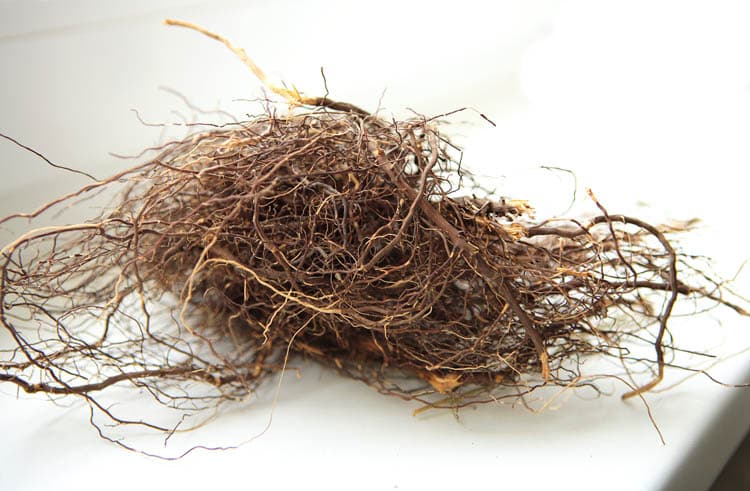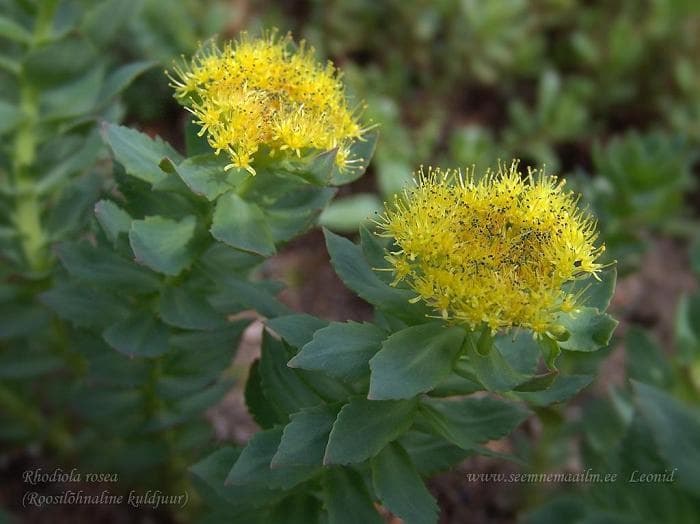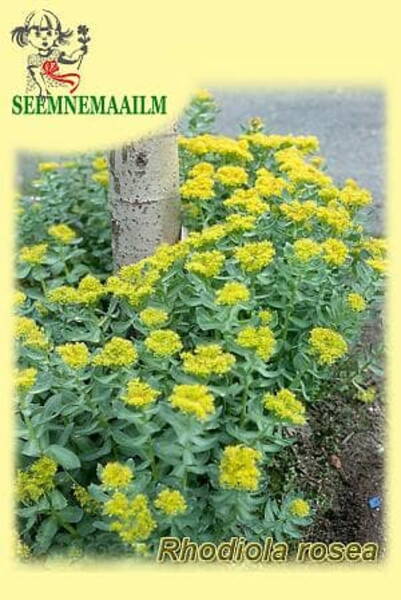Perennial plant from the Crassulaceae family.
Flower colour: yellow.
Natural flowering period: May - June.
Winter hardiness zones: Z1 - Z8.
Flowering plant height: 25 cm.
1.0 g = 7400 seeds.

One of the most popular medicinal plants. It contains substances that stimulate the nervous system and have adaptogenic properties, i.e. increasing the resistance of the human body under adverse effects.
Perennial, herbaceous, dioecious plant. She has a thick shortened rhizome with a large number of renewal buds and few roots. The rhizome is characterized by a golden sheen, and when the outer layer is scraped off - a lemon yellow colour. The stems and leaves of Rhodiola rosea are juicy and fleshy. There are several stems, sometimes even up to a hundred, they are erect and not branched.
The best conditions for the habitat of Rhodiola are places with abundant flowing moisture in the valleys of mountain streams and rivers, rocky shores, lake shores, wet alpine and subalpine meadows. There, Rhodiola rosea forms extensive thickets and dominates among other plants. In drier places, for example, in sparse cedar and larch subalpine woodlands, in thickets of subalpine shrubs, Rhodiola rosea is less common.
Rhodiola rosea is known in Altai as a remedy that increases endurance and human performance. Rhodiola rosea is widely used in oriental medicine, it is even called "Tibetan ginseng".
The chemical study of Rhodiola rosea and the study of the effects of its preparations on humans began in 1961 at the Tomsk Medical Institute. The stimulating and tonic properties of Rhodiola preparations have been proven by animal experiments and clinical observations. The main active ingredient on which the specific properties of Rhodiola rosea depend is the phenolic glycoside Rhodioloside.
Rhodiola rosea is also used for the production of tonic soft drinks and medicinal balms.
Rhodiola rosea grows well in culture, but it is not grown commercially. It has been established that in the culture the percentage of active substances in Rhodiola decreases, but the mass of rhizomes, the number of renewal buds laid on the rhizomes, and the number of seeds increase.
Amateur gardeners successfully grow Rhodiola in garden plots.
Soil: Rhodiola rosea grows well in ordinary garden soil with good drainage, but light, sandy soils are best for it.
If the soils are heavy and clayey, it is recommended to add sand (up to 10 kg per 1 m2).
Care: for the successful development of Rhodiola rosea, uniform sufficient watering is necessary. In nature, the rhizomes of Rhodiola are subject to natural silting, while in culture, the rhizomes often bulge above the soil surface. Therefore, it is necessary several times during the summer to sprinkle the earth around Rhodiola or just spud the plants a little.
Reproduction: seeds and vegetatively. Plant segments of rhizomes 5-6 cm long with 2-3 renewal buds, while (very important +!) They do not deepen them by more than 1-1.5 cm.
It must be remembered that Rhodiola is a dioecious plant. Therefore, if you purchased one copy and propagated vegetatively, then you will have either only male or only female plants, and, of course, there will be no seeds.

Roseroot, arctic root. Bot. syn.: Rhodiola arctica Boriss., Rhodiola roanensis Britt., Rhodiola scopolii Simonk., Sedum rhodiola DC., Sedum rosea (L.) Scop., Sedum roseum Scop.












